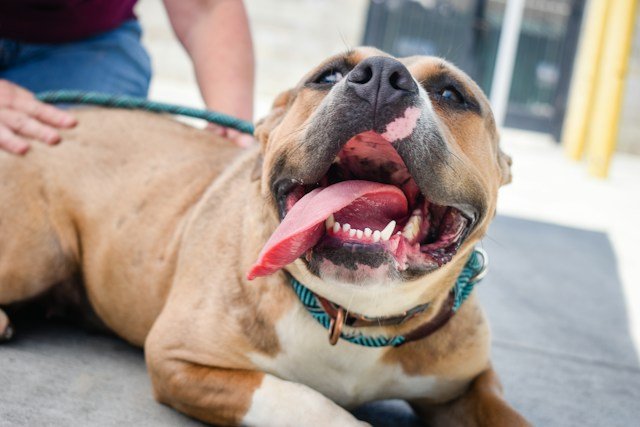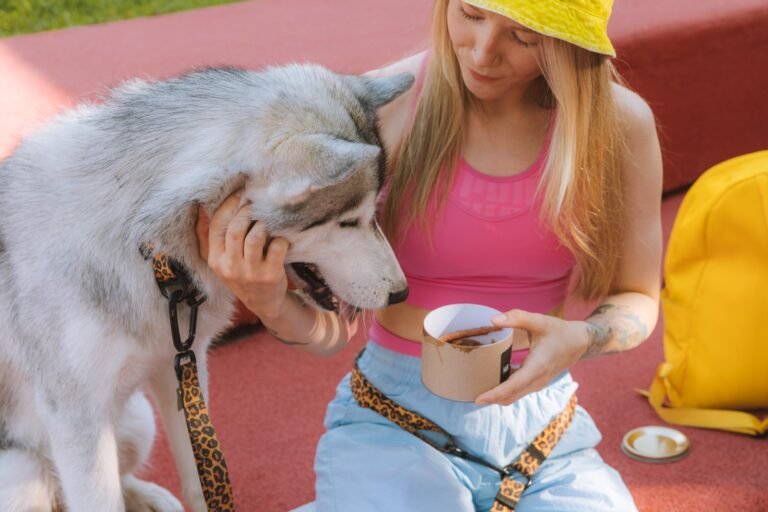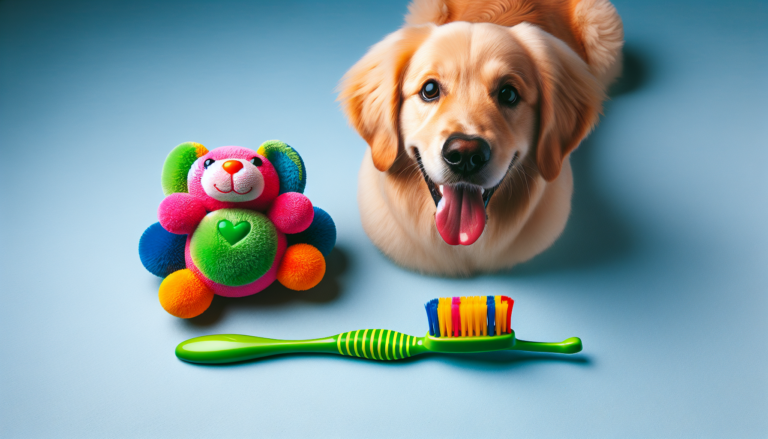Common Health Issues In Dogs And How To Prevent Them
So you’ve got yourself a furry friend, and you want to make sure they stay happy and healthy for years to come. Well, good news! In this article, we’ll be covering some of the most common health issues that dogs face and, more importantly, how you can prevent them. From pesky fleas and ticks to keeping their pearly whites sparkling clean, we’ve got you covered. So sit back, relax, and let’s dive into the wonderful world of doggy health!
Obesity and Weight Management
Importance of maintaining a healthy weight
Maintaining a healthy weight is crucial for your furry friend’s overall well-being. Just like in humans, obesity in dogs can lead to a range of health issues such as joint problems, heart disease, and diabetes. By keeping your dog at a healthy weight, you can help them live a longer and happier life.
Understanding the causes of obesity in dogs
Obesity in dogs can be caused by a variety of factors, including overfeeding, lack of exercise, and genetics. It’s important to understand that every dog has different dietary needs based on their breed, age, and activity level. Consulting with your veterinarian can help you determine the appropriate caloric intake for your dog and identify any underlying factors contributing to their weight gain.
Creating a balanced diet for your dog
A balanced diet is key to managing your dog’s weight and overall health. Talk to your veterinarian about the best food options for your dog’s specific needs, taking into consideration factors such as age, breed, and any existing health conditions. It’s important to provide a mix of high-quality proteins, healthy fats, and carbohydrates to ensure your dog gets all the necessary nutrients without excessive calorie intake.
Incorporating regular exercise
Regular exercise is essential for both weight management and overall wellness. Aim for at least 30 minutes of physical activity every day, but keep in mind that the exercise needs of dogs vary depending on their breed and age. Whether it’s going for a walk, playing fetch, or engaging in interactive play, find activities that your dog enjoys and can maintain a healthy weight.
Monitoring your dog’s weight
Regularly monitoring your dog’s weight is important to ensure they are on track with their weight management plan. Keep track of their weight at home with a pet-friendly scale or visit your veterinarian for regular weigh-ins. By monitoring their weight, you can make any necessary adjustments to their diet or exercise routine to maintain their optimal weight.
Seeking professional advice and guidance if needed
If you’re struggling to manage your dog’s weight or have concerns about their overall health, it’s important to seek professional advice from your veterinarian. They can provide tailored guidance, recommend specialized diets or weight-loss programs, and offer ongoing support to help your furry friend achieve and maintain a healthy weight.
Dental Problems
Brushing your dog’s teeth regularly
Just like humans, dogs need regular dental care to prevent dental problems such as plaque buildup, gum disease, and tooth decay. Get into the habit of brushing your dog’s teeth at least 2-3 times a week using a dog-specific toothbrush and toothpaste. Start slowly and gradually increase the duration of brushing sessions to ensure your dog feels comfortable throughout the process.
Using dental treats and toys
In addition to regular brushing, dental treats and toys can be a great way to promote good oral hygiene. Look for treats and toys specifically designed to improve dental health by reducing plaque and tartar buildup. These products often have textures or shapes that help clean your dog’s teeth as they chew, providing them with a tasty and enjoyable way to maintain healthy teeth and gums.
Feeding a balanced diet for dental health
The type of food you feed your dog can also have an impact on their dental health. Opt for high-quality dog food that supports dental health, such as options that are specially formulated to promote good oral hygiene. These foods often have a crunchy texture that helps scrape away plaque while your dog eats, contributing to healthier teeth and gums.
Regular dental check-ups
Routine dental check-ups with your veterinarian are essential to monitor your dog’s oral health. During these visits, your veterinarian will conduct a thorough examination, clean your dog’s teeth professionally if needed, and address any potential dental issues. Regular check-ups not only help prevent dental problems but also ensure any existing issues are detected early and treated promptly.
Professional dental cleaning when necessary
In some cases, your dog may require professional dental cleaning under anesthesia to address more significant dental issues. This procedure involves a deeper cleaning of your dog’s teeth, including scaling and polishing to remove stubborn plaque and tartar. Your veterinarian will assess your dog’s dental health and recommend professional cleaning as necessary to maintain their oral hygiene.

Fleas, Ticks, and Parasites
Understanding the importance of flea and tick prevention
Fleas, ticks, and other parasites can wreak havoc on your dog’s health, causing discomfort, itchiness, and even transmitting diseases. Prevention is key when it comes to these pesky pests. Using preventive measures helps protect your dog from infestations and potential health issues associated with fleas, ticks, and other parasites.
Using appropriate preventive products
Consult with your veterinarian to determine the most effective preventive products for your dog. Options range from topical treatments to oral medications, all designed to repel or kill fleas, ticks, and parasites. It’s essential to follow the recommended dosage and application instructions provided by your veterinarian to ensure maximum effectiveness and safety for your dog.
Regular grooming and inspection
Regular grooming plays a crucial role in monitoring your dog for any signs of fleas, ticks, or parasites. By brushing your dog’s fur regularly and inspecting for any evidence of these pests, you can catch infestations early and take the necessary steps to eliminate them. Additionally, grooming helps remove dirt, debris, and loose hair, keeping your dog’s coat healthy and reducing the risk of parasite infestations.
Maintaining a clean living environment
Parasites can thrive not only on your dog but also in your home environment. To prevent infestations, it’s important to maintain a clean living space for your furry friend. Vacuum regularly, wash bedding and blankets, and consider using pet-friendly insecticides or treatments in areas where your dog spends time. By keeping their environment clean, you can minimize the risk of flea, tick, and parasite infestations.
Regular veterinary check-ups for parasite control
Regular check-ups with your veterinarian are essential for parasite control and prevention. Your veterinarian can conduct thorough examinations to check for any signs of fleas, ticks, or other parasites. They will also recommend appropriate preventive measures and follow-up treatments based on your dog’s specific needs and potential exposure to pests.
Ear Infections
Understanding the causes of ear infections
Ear infections are a common problem in dogs and can be caused by various factors, including allergies, moisture, foreign objects, or the buildup of earwax. It’s important to understand the underlying cause of your dog’s ear infections to effectively prevent and treat them.
Regular ear cleaning and maintenance
Routine ear cleaning is essential to prevent ear infections and maintain your dog’s ear health. Use a veterinarian-recommended ear cleanser and gently clean your dog’s ears as part of their regular grooming routine. Be cautious not to insert any objects deep into the ear canal, as this can cause injury. If you’re unsure about how to clean your dog’s ears, consult your veterinarian for guidance.
Avoiding moisture and water exposure
Excessive moisture in the ears can create a favorable environment for infection-causing bacteria or yeast to thrive. Minimize your dog’s exposure to water, especially when bathing or swimming. After any water-related activities, make sure to dry their ears thoroughly, gently wiping away any excess moisture to prevent the development of ear infections.
Recognizing signs of ear infections
Understanding the signs of ear infections is crucial for timely intervention. Common symptoms include constant scratching or rubbing of the ears, redness or inflammation of the ear canal, foul odor, excessive ear wax, or discharge. If you notice any of these signs, it’s important to seek veterinary attention as soon as possible for a proper diagnosis and appropriate treatment.
Seeking immediate veterinary attention for treatment
If your dog develops an ear infection, it’s important to seek immediate veterinary attention. Your veterinarian will determine the underlying cause of the infection and prescribe the appropriate treatment, which may include ear drops, oral medication, or topical ointments. Prompt treatment is essential in preventing the infection from worsening and potentially causing long-term damage to your dog’s ears.

Allergies and Skin Conditions
Identifying common allergens
Like humans, dogs can develop allergies to different substances, including pollen, dust mites, certain foods, or even fleas. Identifying the specific allergens your dog is sensitive to can help you minimize their exposure and better manage their allergies and skin conditions.
Minimizing exposure to allergens
Once you’ve identified the allergens affecting your dog, take steps to minimize their exposure. This may involve keeping your dog indoors during peak pollen seasons, using hypoallergenic bedding, and implementing a regular bathing routine to remove allergens from their skin and coat. Minimizing exposure to allergens can significantly reduce the frequency and severity of allergic reactions.
Maintaining a clean and allergen-free living environment
Creating an allergen-friendly living environment is crucial for dogs with allergies and skin conditions. Regularly vacuum your home, wash bedding and toys, and consider using air purifiers to remove allergens from the air. Keeping your home clean and free from potential allergens helps create a healthier environment for your allergic dog.
Using appropriate skin-friendly products
Choosing skin-friendly products, such as hypoallergenic shampoos, conditioners, and grooming products, can help soothe your dog’s irritated skin. These products are specially formulated to be gentle and less likely to trigger allergic reactions. Consult with your veterinarian to determine the best skin-friendly products for your dog’s specific needs.
Regular grooming and checking for skin abnormalities
Regular grooming not only helps keep your dog’s coat and skin clean but also allows you to check for any signs of skin abnormalities such as rashes, dry patches, or hot spots. Early detection of any skin issues can help prevent them from worsening or developing into more severe conditions. If you notice any skin abnormalities, consult your veterinarian for proper diagnosis and treatment.
Consulting with a veterinarian for proper diagnosis and treatment
If your dog is experiencing allergies or skin conditions, it’s crucial to consult with a veterinarian for proper diagnosis and treatment. Your veterinarian can conduct allergy tests to identify specific allergens, recommend appropriate treatment options, and guide you on managing your dog’s allergies and skin conditions effectively.
Heartworm Disease
Understanding heartworm transmission and risks
Heartworm disease is a serious and potentially fatal condition caused by parasitic worms that live in the heart and blood vessels of infected dogs. The disease is primarily transmitted through mosquito bites. Understanding the risks and transmission mechanisms can help you take the necessary preventative measures to protect your dog.
Administering regular heartworm preventive medication
Administering regular heartworm preventive medication is essential in protecting your dog from heartworm disease. These medications work by killing the immature worms before they can reach the heart and cause damage. Consult with your veterinarian to select the most suitable preventive medication for your dog, and ensure regular and timely administration.
Avoiding mosquito exposure and using repellents
Minimizing your dog’s exposure to mosquitoes can help reduce the risk of heartworm disease. Avoid taking your dog outdoors during peak mosquito activity times and consider using dog-specific mosquito repellents. It’s also important to keep windows and doors screened to prevent mosquitoes from entering your home.
Regular heartworm testing
Regular heartworm testing is important even if your dog is on a preventative medication regimen. Testing ensures that the prevention measures are effective and that your dog hasn’t contracted the disease. Your veterinarian will advise on the appropriate testing schedule based on your dog’s specific needs and potential exposure to heartworms.
Seeking immediate veterinary attention if symptoms occur
If you notice any symptoms such as coughing, difficulty breathing, fatigue, or weight loss, it’s essential to seek immediate veterinary attention. These symptoms may indicate a potential heartworm infection. Early detection and prompt treatment are vital in managing the disease and preventing further complications.
Gastrointestinal Issues
Feeding a balanced and appropriate diet
Feeding a balanced and appropriate diet is key to maintaining your dog’s gastrointestinal health. Ensure that your dog’s food provides all the necessary nutrients and is free from fillers and artificial additives that may upset their stomach. Choose high-quality, easily digestible options and consult with your veterinarian to determine the best diet for your dog’s specific needs.
Avoiding sudden dietary changes
Dogs have sensitive digestive systems, and sudden dietary changes can lead to gastrointestinal upset, including diarrhea, vomiting, and discomfort. If you need to switch your dog’s food, do it gradually by slowly introducing the new food and phasing out the old one over several days. This allows their digestive system to adjust and minimize the risk of gastrointestinal issues.
Preventing access to toxic foods and substances
Many common human foods and household items can be toxic to dogs and cause gastrointestinal problems. Keep your dog away from foods such as chocolate, onions, garlic, and certain fruits or plants. Additionally, ensure that your dog doesn’t have access to harmful substances such as household cleaners, pesticides, or medications, as these can also cause gastrointestinal distress.
Monitoring for signs of gastrointestinal issues
Monitoring your dog for any signs of gastrointestinal issues is crucial for early intervention. Common symptoms include vomiting, diarrhea, abdominal pain, lack of appetite, or a change in stool consistency. If you notice any of these symptoms, consult with your veterinarian for proper diagnosis and treatment to alleviate your dog’s discomfort and prevent more serious complications.
Seeking veterinary advice for proper diagnosis and treatment
If your dog is experiencing persistent or severe gastrointestinal issues, it’s important to seek veterinary advice for proper diagnosis and treatment. Your veterinarian can conduct tests to identify the underlying cause of the problem, recommend appropriate medications or dietary adjustments, and provide guidance on managing your dog’s gastrointestinal health effectively.
Joint and Mobility Problems
Maintaining a healthy weight
Maintaining a healthy weight is essential for reducing strain on your dog’s joints and preventing mobility problems. Excess weight can lead to issues such as arthritis, joint inflammation, and decreased mobility. Consult with your veterinarian to determine your dog’s ideal weight and develop a weight management plan if necessary.
Incorporating regular exercise and physical activity
Regular exercise and physical activity play a significant role in supporting your dog’s joint health and overall mobility. Low-impact exercises such as walking, swimming, or gentle play can help strengthen muscles, improve joint flexibility, and prevent stiffness. Be mindful of your dog’s age, breed, and any existing joint conditions when determining the appropriate exercise routine.
Using joint supplements and anti-inflammatory medications if recommended by a veterinarian
If your dog is experiencing joint and mobility issues, your veterinarian may recommend joint supplements or anti-inflammatory medications. These can help alleviate pain, reduce inflammation, and support joint health. Always consult with your veterinarian before starting any new medications or supplements to ensure they are safe and appropriate for your dog.
Avoiding excessive strain and impact on joints
Excessive strain and impact on joints can worsen mobility problems and contribute to further damage. Avoid activities that involve jumping, sudden direction changes, or long periods of excessive exercise. Opt for low-impact exercises and provide your dog with appropriate rest and downtime to allow their joints to recover.
Providing a comfortable and supportive sleeping area
A comfortable and supportive sleeping area can make a significant difference in managing joint and mobility problems. Provide your dog with a well-padded and supportive bed that helps alleviate pressure on their joints. If necessary, consider orthopedic beds specifically designed to provide extra support and comfort for dogs with joint issues.
Urinary Tract Infections
Encouraging regular urination and hydration
Promoting regular urination and adequate hydration is essential for preventing urinary tract infections in dogs. Encourage your dog to urinate frequently by providing regular bathroom breaks throughout the day. Ensure they have access to clean and fresh water at all times to maintain proper hydration.
Maintaining good hygiene in the genital area
Maintaining good hygiene in the genital area helps prevent bacteria from entering the urinary tract and causing infections. Regularly clean your dog’s genital area, gently wiping from front to back to remove any bacteria or debris. Be cautious not to use harsh chemicals or irritants that can disrupt the natural balance of the urinary tract.
Avoiding prolonged urine retention
Prolonged urine retention can increase the risk of urinary tract infections. Ensure that your dog has ample opportunities to relieve themselves throughout the day, especially after meals or periods of rest. Avoid restricting their access to outdoor bathroom breaks for extended periods, as this can lead to urine retention and potential infections.
Recognizing common signs of urinary tract infections
Being aware of the signs of urinary tract infections is crucial for early detection and treatment. Common symptoms include frequent urination, difficulty urinating, blood in the urine, accidents in the house, or signs of discomfort while urinating. If you notice any of these signs, seek veterinary attention promptly for proper diagnosis and necessary treatment.
Seeking veterinary attention for proper diagnosis and treatment
If you suspect your dog has a urinary tract infection, it’s important to seek veterinary attention for proper diagnosis and treatment. Your veterinarian can perform tests to confirm the infection and prescribe the appropriate medication, such as antibiotics, to clear the infection and prevent it from spreading or causing further complications.
Cancer
Understanding common types of cancers in dogs
Cancer is unfortunately a common health issue in dogs. It can manifest in various forms, including skin cancer, bone cancer, lymphoma, and mammary gland cancer. Understanding the different types of cancers that can affect dogs can help you recognize potential signs and seek early treatment.
Recognizing signs and symptoms of cancer
Early detection is vital in treating cancer effectively. Familiarize yourself with the common signs and symptoms of cancer in dogs, which can include unexplained weight loss, changes in appetite, lumps or bumps, abnormal bleeding, lethargy, difficulty breathing, or changes in behavior. If you notice any of these symptoms, consult with your veterinarian for further evaluation.
Minimizing exposure to carcinogens
Minimizing your dog’s exposure to potential carcinogens is an important preventive measure against cancer. Avoid exposing your dog to secondhand smoke, chemicals, pesticides, and other environmental toxins that can potentially increase the risk of cancer. Provide a clean and safe environment for your dog, minimizing their exposure to potential carcinogens.
Maintaining regular veterinary check-ups for early detection
Regular veterinary check-ups are crucial for the early detection of cancer and other health issues. During these check-ups, your veterinarian will conduct thorough examinations, including palpating for any abnormal lumps or masses. They may also recommend routine screening tests, such as bloodwork or imaging, to detect any early signs of cancer.
Exploring available treatment options with a veterinarian
If your dog is diagnosed with cancer, discussing available treatment options with your veterinarian is essential. Treatment options may include surgery, chemotherapy, radiation therapy, or palliative care, depending on the type and stage of cancer. Your veterinarian can guide you through the available options, helping you make informed decisions regarding your dog’s treatment and care.
Remember, prevention is always better than cure when it comes to your dog’s health. By taking proactive measures and seeking professional guidance, you can help prevent common health issues and provide your furry friend with a happy and healthy life.






